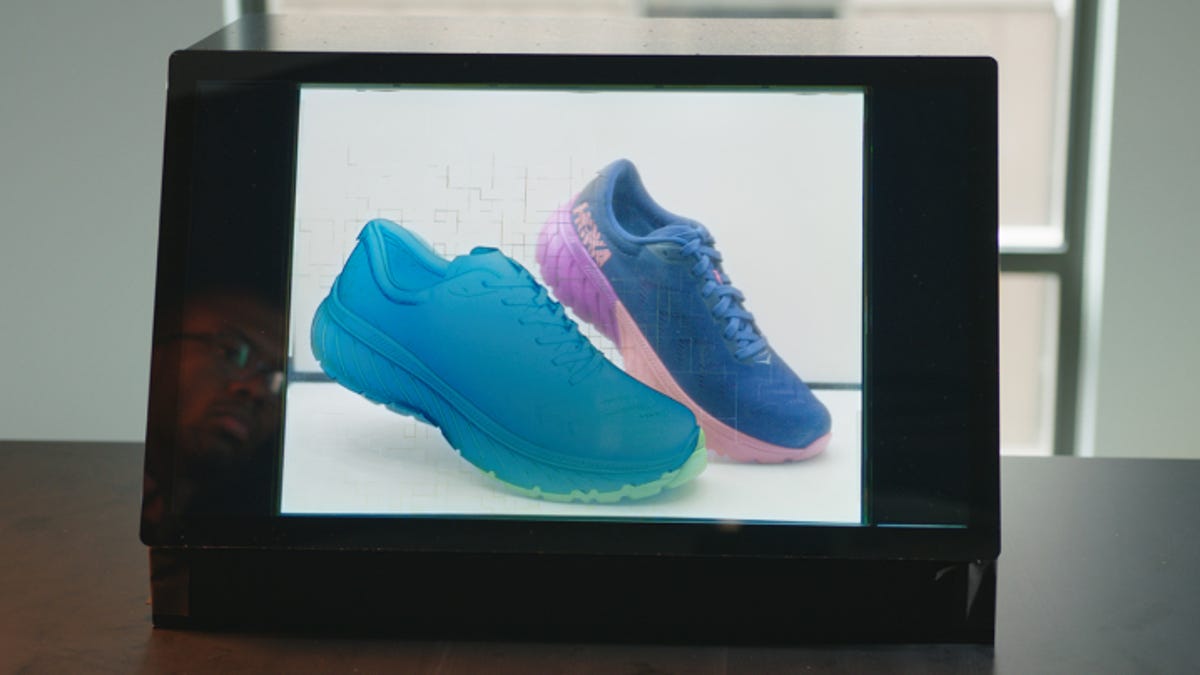Adobe's mixed-reality display blends digital and physical
Project Glasswing wants to bring augmented reality to life.

Project Glasswing lets users tweak the opacity of a screen and overlay text and video.
Adobe's research team has created an experimental display prototype that blends digital and physical worlds, the company said in a Friday blog post. The project, called Project Glasswing, features a transparent display that lets users tweak a screen's opacity to reveal objects on the other side. They can also interact with or reposition images and videos on the screen, which can be layered over the objects.
The display essentially brings augmented reality to life by enhancing real-world objects with virtual content, but no phones or glasses are needed.
"Project Glasswing explores the possibility of bringing Adobe's design tools to the physical world, creating the illusion of a Photoshop, After Effects or XD layer appearing in space in front of 3D real objects," Adobe wrote in the post.
The company says this prototype could unlock new storytelling opportunities. It could, for instance, be implemented in store advertising so that shoes on display in a window are accompanied with text, video or graphics. Museums could also display artifacts in glass cases with overlaying information graphics.
Adobe will share more about Project Glasswing at next week's Siggraph conference in Los Angeles.

